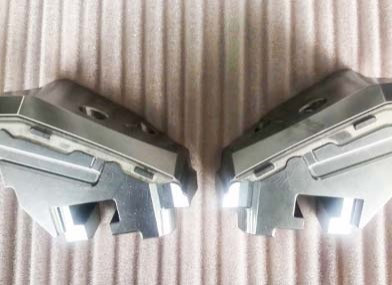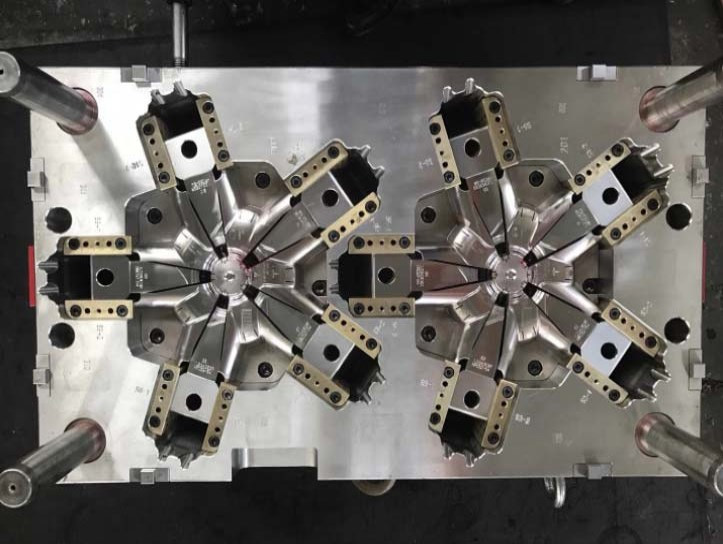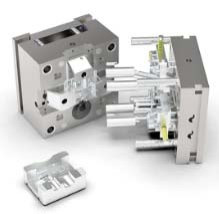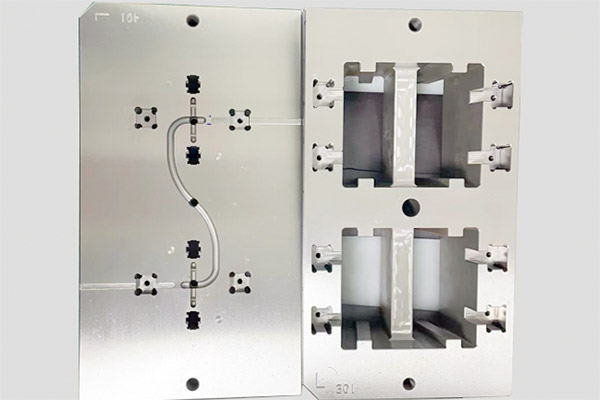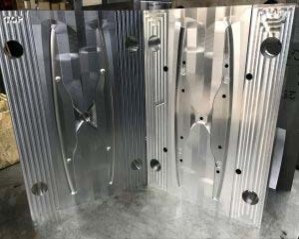
Rapid Molding Advantages
Brand Name:Hamsan Tooling
Mold Base:LKM;HASCO;DME,etc
Mold Material:P20/Aluminum
Tolerance:+/-0.01mm
Shaping Mode:Plastic Injection Mould
Design Software:AutoCAD;NX;ProE
Packaging Details:Wooden case
Delivery Time:18 days since confirm
Products Details
When to use Direct Rapid Tooling?
Direct rapid tooling is more commonly used in manufacturing than in prototyping. In low-volume production, direct rapid tooling allows us to create a mold or tooling quickly and produce parts immediately. Direct rapid tooling is beneficial for low-volume production as the tools don’t have to be robust or durable. We can produce more than 5,000 units from direct rapid tooling depending on the chosen materials and the complexity level of the design. When we use direct rapid tooling in prototyping, there are some limitations. Here are the advantages and disadvantages of direct rapid tooling.
Advantages of Rapid Tooling -
Faster time to market: In traditional machining methods, the product development cycle may involve multiple manufacturing processes and technologies. This can increase the time spent on each step and extend the time from design to real product. Quick tools involve fewer steps than traditional tool methods. Quick tools can speed up the whole process. The faster you can complete the prototyping and prototyping process, the sooner you can complete your designs and get them into the hands of your customers.
Reduce costs: The longer you spend on the product development cycle, the higher the cost. Over time, the speed advantages of fast tooling can save businesses money.
Does not consume resources: Prototyping or production using this method requires very few resources. For example, you can use one tool or mold to make multiple prototypes.
Various material grades: Rapid Tooling allows you to use actual production-grade materials. You can quickly manufacture custom tooling with Rapid Tooling. You can then produce as many prototypes as possible from this mold, creating parts with different material grades and testing their properties. This will give you a clearer idea of which material grades perform best in real-world applications and allow you to make the right material choices before bringing new products to market.
Design and functional testing: Rapid tooling allows tooling to be made in a short time. It gives more freedom to test new ideas and make design tweaks. Parts can undergo mechanical testing, such as impact and stress testing, to explore design flaws before production. This will prevent many of the problems that will arise in future high-volume production phases.
Process parameter test: Rapid Tooling can also be used to test process parameters during the production phase. For example, different injection speeds and mold temperatures during injection molding can affect part quality, and engineers and designers can have more measurement control over the final part.
Disadvantages of Rapid Tooling -
Not durable or strong: Prototypes made using this method are generally not durable, and molds made using this process are prone to breakage because the materials used are often not of high quality. This will result in higher production costs if you change molds repeatedly. Another way that you can increase the cost of your product is if you keep changing the design, which means changing the mold as well. This method is less suitable if details are an important quality of your product or prototype.
Error-prone: Creating multiple stencils using this method often results in errors. This error is usually caused by differences in mold dimensions. This is especially true if you use different materials.
Time-consuming: It takes longer to make a master mold than to make a mold directly. In addition, the process involves many steps, which can increase production costs. If your design is likely to change during the prototyping phase, then you should avoid this approach.
Not suitable for simple designs: This method is best for complex designs that require a lot of detail. If your design is simple, then this approach is most likely not for you.
Limitations of Rapid Tooling -
Higher injection cost and labor cost: Prototyping with rapid tools is an iterative process, which means more spending on injection molding, especially if you're looking to refine your design. Higher injection costs translate into higher labor costs, which can increase your production costs.
Shorter die life cycle: Fast molds do not last very long due to the stress placed on them by the injection process. The materials used to produce the molds, such as aluminum and steel, are not of high quality. This may cause you to create a new mold from time to time to replace a worn mold.
Direct rapid tooling is more commonly used in manufacturing than in prototyping. In low-volume production, direct rapid tooling allows us to create a mold or tooling quickly and produce parts immediately. Direct rapid tooling is beneficial for low-volume production as the tools don’t have to be robust or durable. We can produce more than 5,000 units from direct rapid tooling depending on the chosen materials and the complexity level of the design. When we use direct rapid tooling in prototyping, there are some limitations. Here are the advantages and disadvantages of direct rapid tooling.
Advantages of Rapid Tooling -
Faster time to market: In traditional machining methods, the product development cycle may involve multiple manufacturing processes and technologies. This can increase the time spent on each step and extend the time from design to real product. Quick tools involve fewer steps than traditional tool methods. Quick tools can speed up the whole process. The faster you can complete the prototyping and prototyping process, the sooner you can complete your designs and get them into the hands of your customers.
Reduce costs: The longer you spend on the product development cycle, the higher the cost. Over time, the speed advantages of fast tooling can save businesses money.
Does not consume resources: Prototyping or production using this method requires very few resources. For example, you can use one tool or mold to make multiple prototypes.
Various material grades: Rapid Tooling allows you to use actual production-grade materials. You can quickly manufacture custom tooling with Rapid Tooling. You can then produce as many prototypes as possible from this mold, creating parts with different material grades and testing their properties. This will give you a clearer idea of which material grades perform best in real-world applications and allow you to make the right material choices before bringing new products to market.
Design and functional testing: Rapid tooling allows tooling to be made in a short time. It gives more freedom to test new ideas and make design tweaks. Parts can undergo mechanical testing, such as impact and stress testing, to explore design flaws before production. This will prevent many of the problems that will arise in future high-volume production phases.
Process parameter test: Rapid Tooling can also be used to test process parameters during the production phase. For example, different injection speeds and mold temperatures during injection molding can affect part quality, and engineers and designers can have more measurement control over the final part.
Disadvantages of Rapid Tooling -
Not durable or strong: Prototypes made using this method are generally not durable, and molds made using this process are prone to breakage because the materials used are often not of high quality. This will result in higher production costs if you change molds repeatedly. Another way that you can increase the cost of your product is if you keep changing the design, which means changing the mold as well. This method is less suitable if details are an important quality of your product or prototype.
Error-prone: Creating multiple stencils using this method often results in errors. This error is usually caused by differences in mold dimensions. This is especially true if you use different materials.
Time-consuming: It takes longer to make a master mold than to make a mold directly. In addition, the process involves many steps, which can increase production costs. If your design is likely to change during the prototyping phase, then you should avoid this approach.
Not suitable for simple designs: This method is best for complex designs that require a lot of detail. If your design is simple, then this approach is most likely not for you.
Limitations of Rapid Tooling -
Higher injection cost and labor cost: Prototyping with rapid tools is an iterative process, which means more spending on injection molding, especially if you're looking to refine your design. Higher injection costs translate into higher labor costs, which can increase your production costs.
Shorter die life cycle: Fast molds do not last very long due to the stress placed on them by the injection process. The materials used to produce the molds, such as aluminum and steel, are not of high quality. This may cause you to create a new mold from time to time to replace a worn mold.

